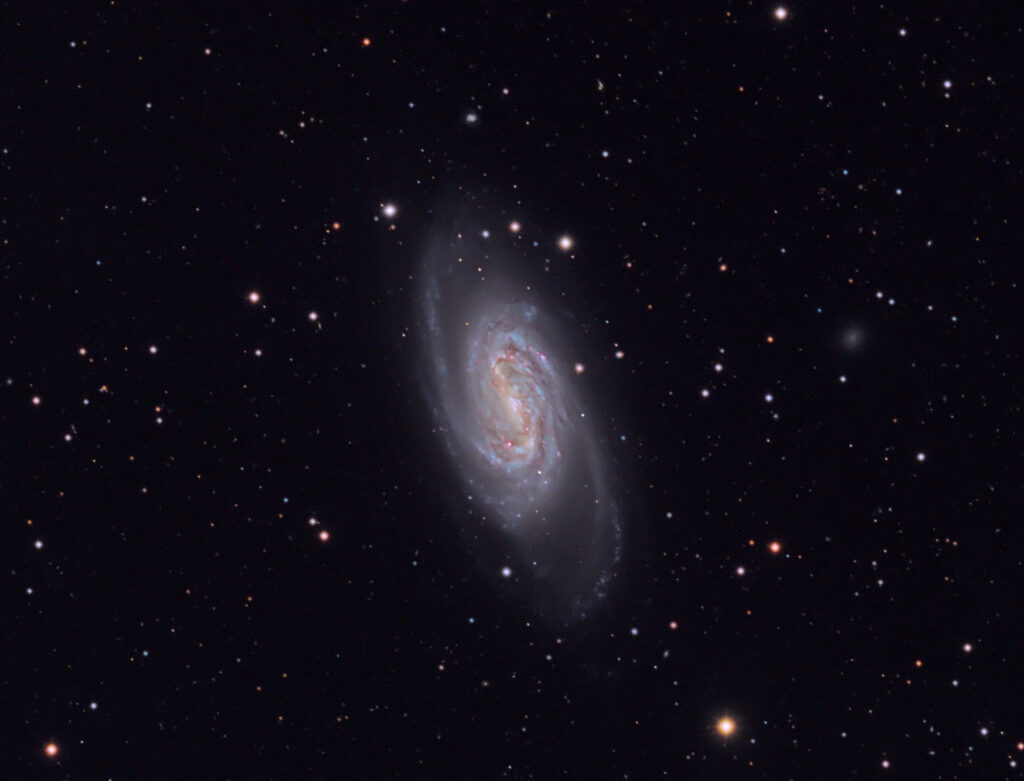NGC 2903
Barred-Spiral Galaxy, Leo
- Description
- Technical
- Links
NGC 2903 is an isolated barred spiral galaxy in the equatorial constellation of Leo, positioned about 1.5° due south of Lambda Leonis. It was discovered by German-born astronomer William Herschel, who cataloged it on November 16, 1784. He mistook it as a double nebula, as did subsequent observers, and it wasn’t until the nineteenth century that the Third Earl of Rosse resolved into a spiral form. J. L. E. Dreyer assigned it the identifiers 2903 and 2905 in his New General Catalogue; NGC 2905 now designates a luminous knot in the northeastern spiral arm.
This field galaxy is located about 30 million light-years away from the Milky Way, and is a member of the Virgo Supercluster. The morphological classification of this galaxy is SBbc, indicating a barred spiral (SB) with moderate to tightly-wound spiral arms (bc). De Vaucouleurs and associates assigned it the class SAB(rs)bc, suggesting a weaker bar structure (SAB) with a partial ring (rs). The bar structure appears stronger in the near infrared band. The galaxy as a whole is inclined by an angle of 60° to the line of sight from the Earth.
72% of the stellar mass is located in the outer disk of the galaxy, and 20% is found in the bar. The bulge adds 5% of the stellar mass, and its star population is generally older. However, the central ~650 pc radius volume of the core is a strong starburst region. The star formation rate here is 0.7 M☉ y−1 and it is being fed by gas inflow along the bar. There is no evidence of an active nucleus.
The irregular dwarf galaxy KKH 51 appears to be a companion, as they have an angular separation of 25′ and nearly the same radial velocity.
Telescope: Astro Physics 175EDF f8.3
Mount: Astro Physics 3600GTO “El Capitan”
Camera: SBIG STT8300
Guider: Mini Borg 50 / SBIG STi
L: 38×10 mins = 260 mins, R: 24×10 mins = 240 mins, G: 24×10 mins = 240 mins, B: 24×10 mins = 240 mins
Total Imaging Time: 18h 20m
Data Imaged remotely over 6 nights during March & April, 2020.
Data acquisition & Processing by David Churchill.
None

